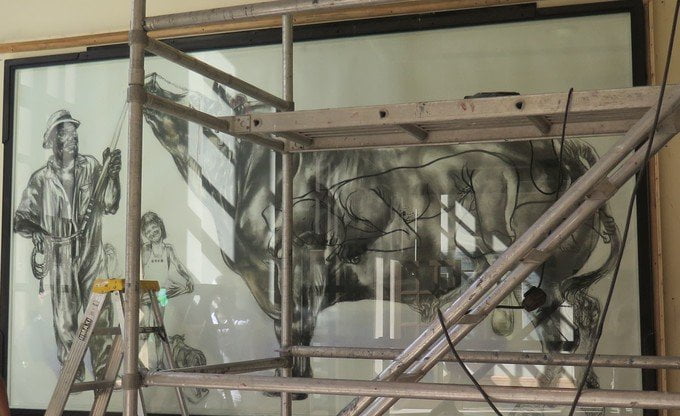It’s sometimes difficult to know when you’re making the right decision, or whether you’re rather not making a decision at all, so much as being pressured into doing what someone else thinks you should.
Or, perhaps, the right decision can be made in the wrong way – too hurriedly, and without enough deliberation. At UCT, we’ve been treading these fine lines for a year now, where even if you think – as I do – that many of our decisions are correct and long-overdue (for example, the renaming of buildings), you might simultaneously fear that the idea of a university as a place of open debate is at risk.
Of course, calls for debate can privilege the established point of view, and often do so. They can serve to slow things down, or to trivialise the concerns of those who demand urgent action.
It’s in cases like this where we need to be careful of embracing an entirely false dichotomy, though, whereby either you’re on the side of virtue and join the revolution, or you’re an obstacle to it, in appealing for more debate and reflection.
You might be on the side of virtue, yet also see value in being as sure as you can be that you’re making the right decision. Which brings me to UCT’s artwork, and the ongoing discussions around what should be done about it.
To quote myself, from this article in GroundUp:
There are a number of artworks in UCT’s collection that could legitimately be regarded as problematic. Even so, any piece of art is potentially offensive to someone, and the very point of art is to provoke reflection and sometimes, discomfort.
It is therefore crucial that any deliberations around the potential removal of art – while being sensitive to those who feel insulted by any given artwork – are also sensitive to the rights and creative intent of the artist concerned.
Where art is removed for the sake of prudence, in fear of it being destroyed or defaced, that removal must be provisional, and on the understanding that a full objective reassessment of the artwork concerned and what it signifies will follow.
Furthermore, artworks need to be understood in the context of their curation. It is both possible, and often desirable, for an artwork that might be offensive in isolation to serve as a valuable spur to debate, when placed in an appropriate context.
That curation is not a task for which everybody is equally qualified. I’m not qualified at all, having zero expertise in art or art history. So, if I were offended by a particular piece of art, I have an epistemic duty to listen to the views of experts, and to give them an opportunity to explain to me that my offense is misplaced.
My opinion, and my subjective feelings of offense, are less relevant data points, and can even be entirely irrelevant to the decision, because only the most benign or even meaningless pieces of art could ever offend nobody at all.
There’s a danger here of overcompensating, and conflating art that is productively offensive with art that is gratuitously so, in the sense that it uncritically reflects racial or other stereotypes. This is why the deliberations need to be conducted carefully, and by experts.
A recent UCT communique includes the following (my emphasis):
It is important to understand that we are not censoring any artworks. Much of the negative public comment fails to recognise that current removals are provisional. It is our belief that the artworks will all ultimately be on display once curatorial policies have been developed. The University remains committed to enabling scholars and the public to engage with the most difficult and challenging works, including those presently under discussion, and many others that may arrive in the future. What is currently at issue is not whether this should be done, but how.
I’m don’t share that belief. As you can read in the statement, a broad consultative process is going to take place, and “cultural, religious or political” sensibilities taken into account.
Any of you who have been part of these sorts of processes – especially in volatile times like those we’re experiencing now – know that the maximally safe or risk-averse strategy is typically followed, which means that subjective offense becomes a trump card, rather than simply a data point in the deliberations.
I hope I’m wrong. But assuming I’m not, some of you might nevertheless think that’s as it should be, and that those subjective feelings should be a trump card. We’ll have to wait and see, though, how this is going to work: is one offended party sufficient reason to consider an artwork problematic, or five? Will the distaste that one of my correspondents has for abstract art count as a “cultural” objection?
If you find these questions silly, I’d like to hear on what principled grounds you think these decisions can be made. There are no objective criteria for offense, and we’re operating in an environment where dialogue is in short-supply, and threats plentiful.
I’m not as animated by these developments as, say, Breyten Breytenbach is (here and here). And I think that Nazi/ISIS comparisons are false and unhelpful, because they trivialise the concerns of protesters and can also be uncharitable towards the institutional response which, while made under pressure, is well-intentioned.
But anyone who thinks, or argues, that these decisions will be made by those qualified to do so, in an environment that allows for them to do so on grounds of the best evidence and careful reasoning, is sorely mistaken.

